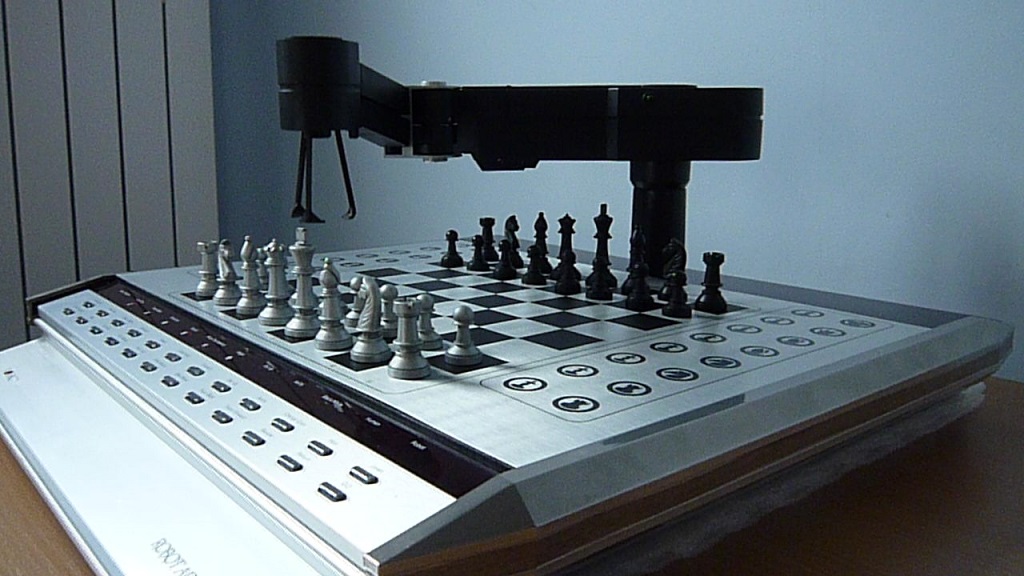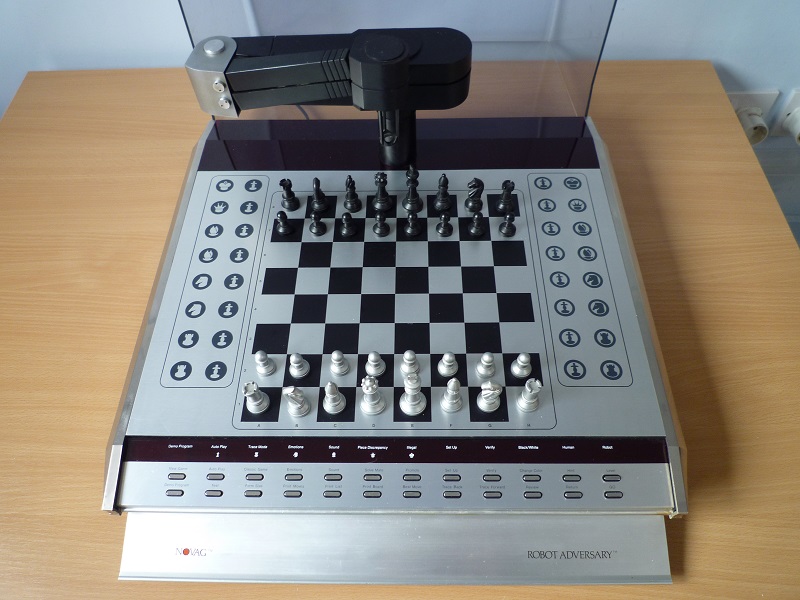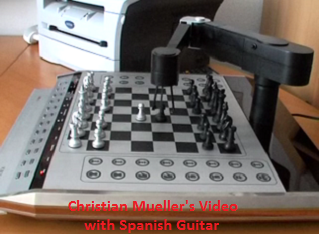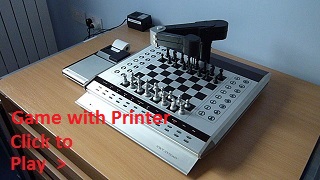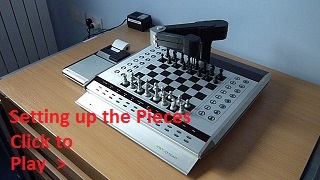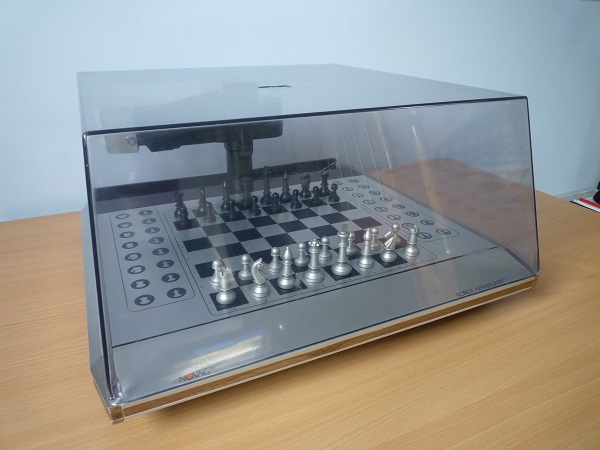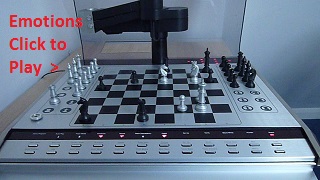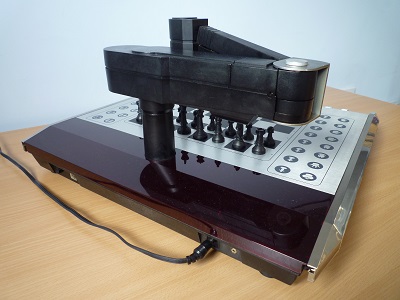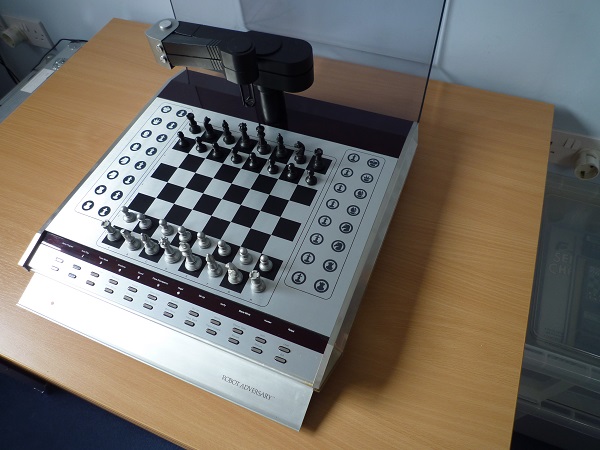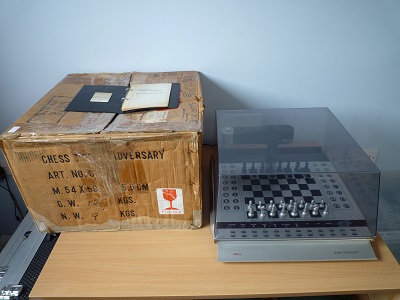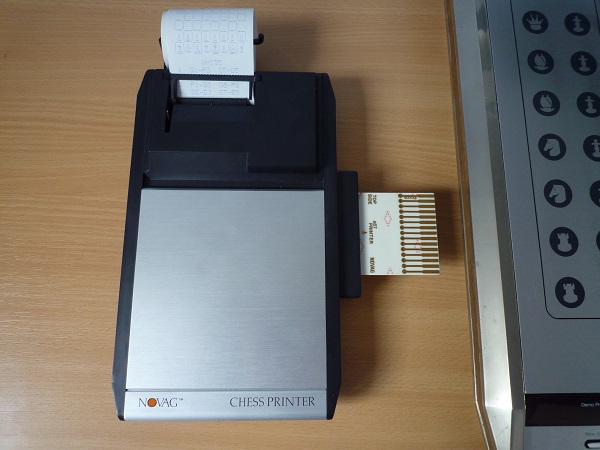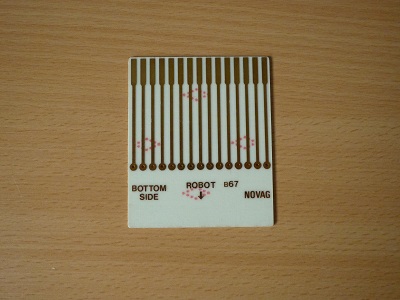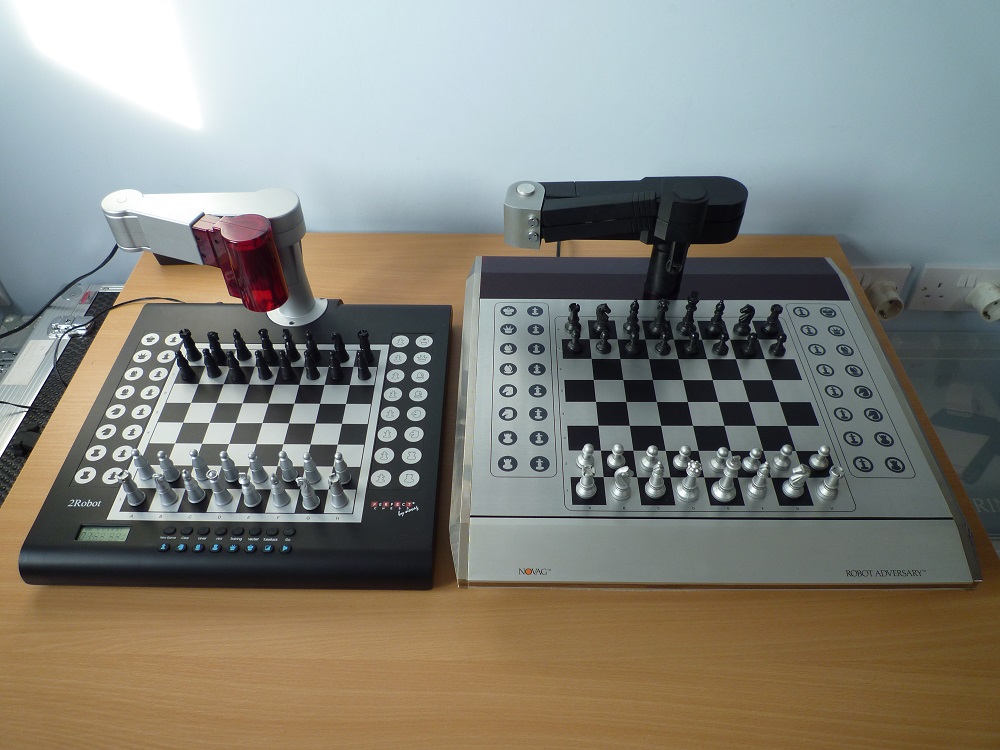|
The Novag Robot Adversary is the most iconic of chess computers. There are several reasons. Firstly, for a product of 1982, its startling futuristic appearance. Secondly the robot arm which in terms of robotic character, comparative speed and range of movement is extraordinary for a consumer product. Thirdly the variety of functions - including autoplay, automatic setting up of the pieces for a new game, trace and review, best move, sound, lights, printer support, and not forgetting the tantrums produced by the ‘emotions’ button which involve waving of the arm, flashing lights and noisy sound. These functions all contribute towards a very impressive and entertaining machine, which was outstanding when it was first sold, and has not been bettered since.
Its playing ability is modest as you would expect of a chess computer developed in 1980/81 and released in September 1982. Schachcomputer.info puts its rating at 1462 Elo. The early Fidelity Prestige which was the strongest and best featured wooden board chess computer of late 1982 has a rating of 1661 Elo. David Kittinger produced the Robot’s chess program which is a version of his well known Mychess program also used in the Novag Savant II, but the Robot Adversary has a larger opening book. The Robot uses a Z80B processor running at 6MHz, the chess program is contained in a 32KB ROM, with a 8KB ROM containing the mechanical routines, and it has 5 KB RAM.
2000 Robot Adversarys were built but the failure rate was high and the vast majority of those sold will have long since developed major faults and been discarded; or stored and forgotten with little hope of repair. Leaving the machine unplayed for extended periods and hence unlubricated is one significant cause of initial failure. The subsequent neglect and botched repairs will have accounted for many. My guesstimate of the number of Robot Adversarys that can still play a game of chess is 1-2%. Those that can complete an autoplay game, including castling and setting up the pieces correctly at the end must be fewer still. How long my Robot will be able to do that is anyone’s guess but Robot owners accept that the Robot Adversary is fragile, they treat them with ‘kid gloves’ and accept that the occasional repair may be required. Happily there are chess computer enthusiasts who are also excellent engineers able to repair Robot Adversarys so hopefully the number of working Robots will grow, rather than shrink, over the next few years.
At the foot of the page are links to further Novag Robot Adversary material, including articles, documents and a film. Below left is a superb video by Christian Mueller showing a Robot Adversary playing a game to Spanish guitar accompaniment. Below that are three of my own videos. The first shows my Robot Adversary playing and printing out a game as it goes along. The second features the Robot setting up the pieces for a new game and lastly there is a brief example of the Robot, with ‘emotions’ switched on, getting excited about checkmate.
|
